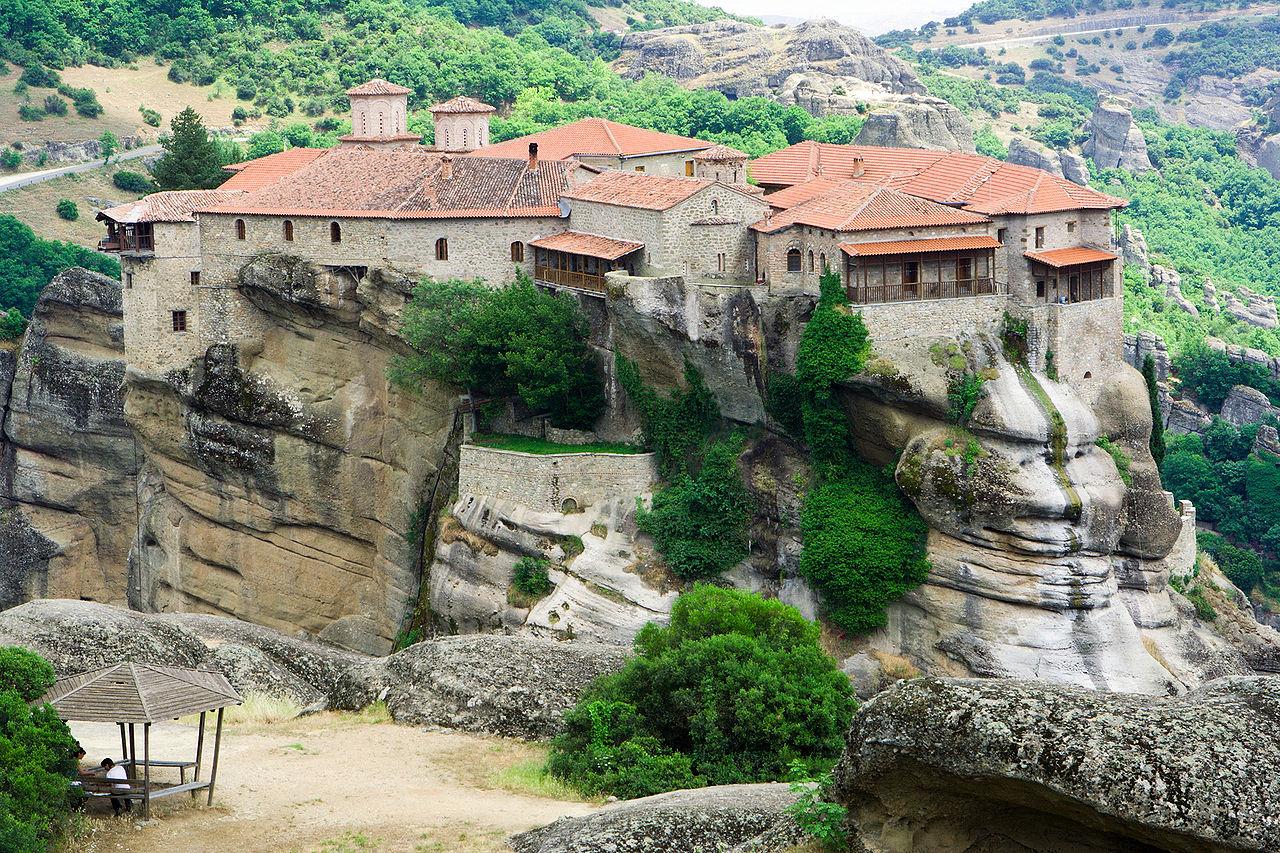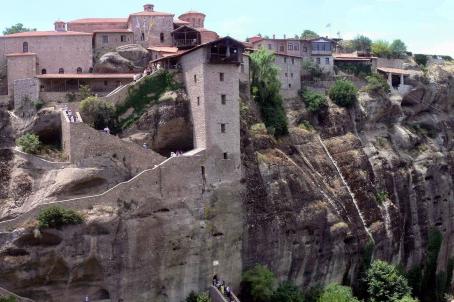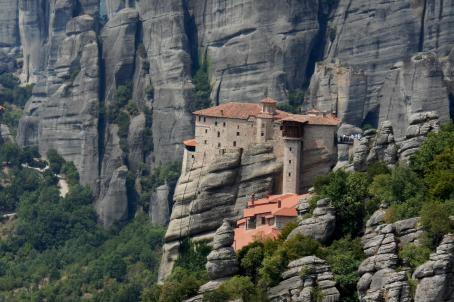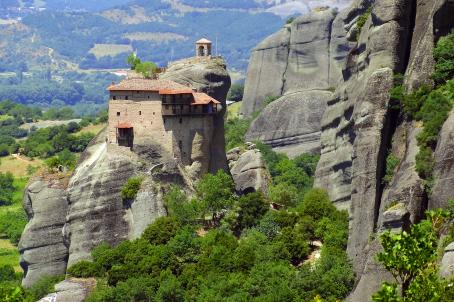Varlaam Monastery

Varlaam Monastery or Monastery of the Saints is a male monastery founded in the early 16th century and named after the ascetic Varlaam, who settled on the cliff and built a chapel there in the 14th century. The monastery experienced a time of wealth and spiritual influence in the 16th century. It was during this period that the bryzone tower was built (1536). The monastery is one of six that continue to be active in the Meteora, and have been included in UNESCO's World Heritage Sites since 1988.





